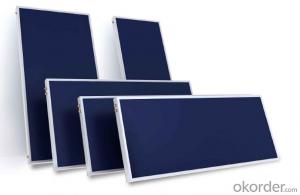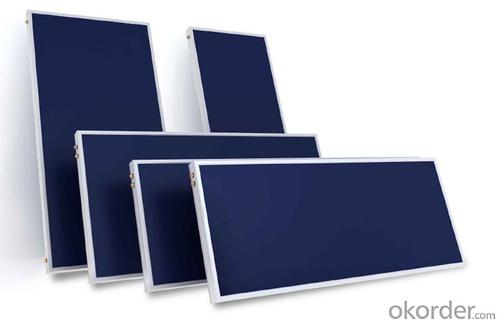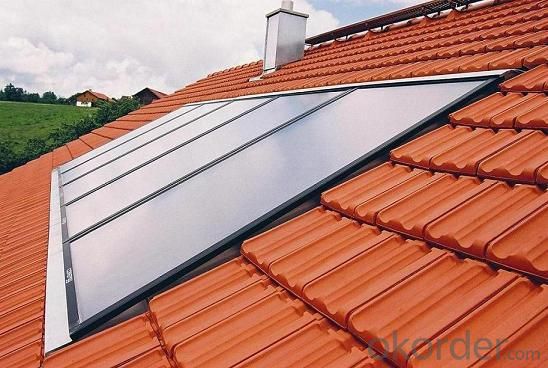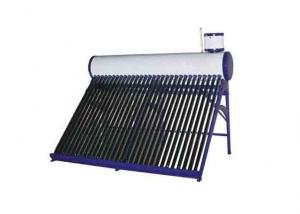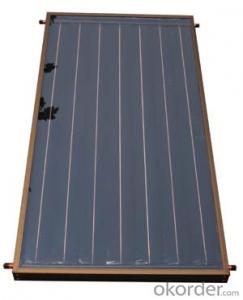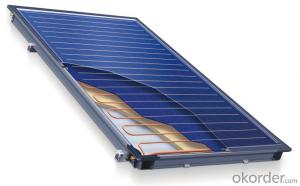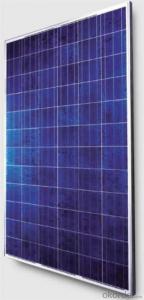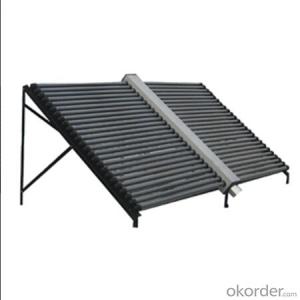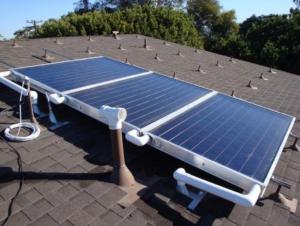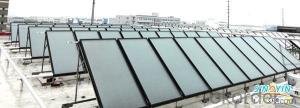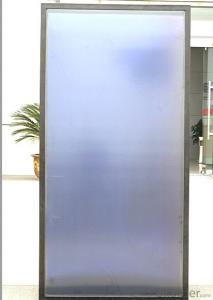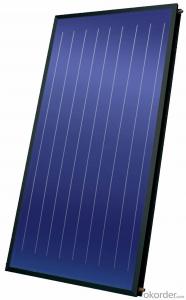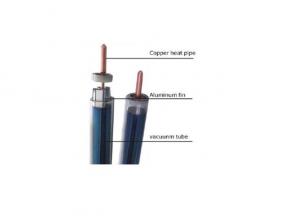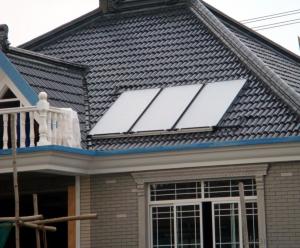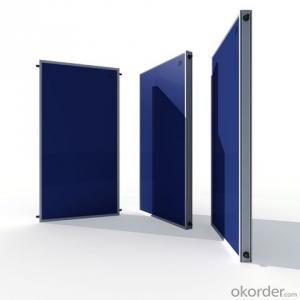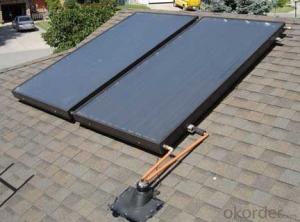Tenkiv Solar Collectors - Flat Plate Solar Collector for Water Heater
- Loading Port:
- Tianjin
- Payment Terms:
- TT OR LC
- Min Order Qty:
- 1 kg
- Supply Capability:
- 50 kg/month
OKorder Service Pledge
OKorder Financial Service
You Might Also Like
1. Structure of Flat Plate Solar Collector For Water Heater
Flat plate solar collector is one of the most basic types of solar collectors, and the structure of this product is shown as following picture. The simple structure, reliable operation, approriate cost and great ability for pressure with large surface for heat absorption make it one of the best choice for the combination of solar energy and the architecture. This flat plate solar collector is designed for water heater.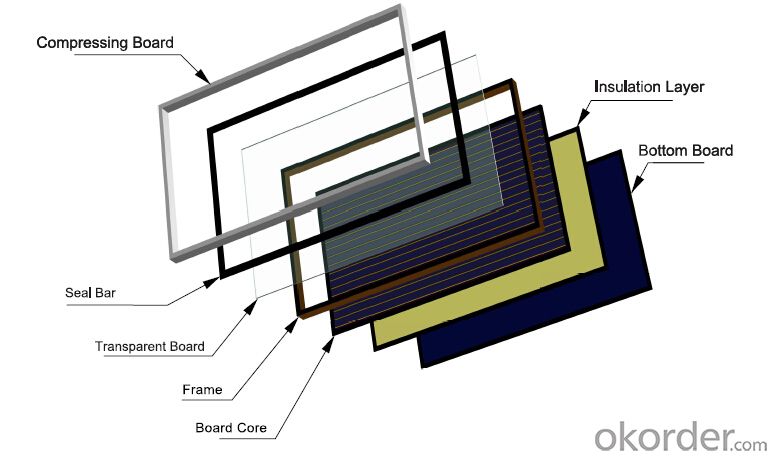
2. Main Features of Flat Plate Solar Collector For Water Heater
Laser welded panel with blue tint film increases the
efficiency of heat accumulation and heat transmission.Ultra white low iron content tempered glass achieves
high transparency.Dull polish silver board color
3. Flat Plate Solar Collector For Water Heater Images
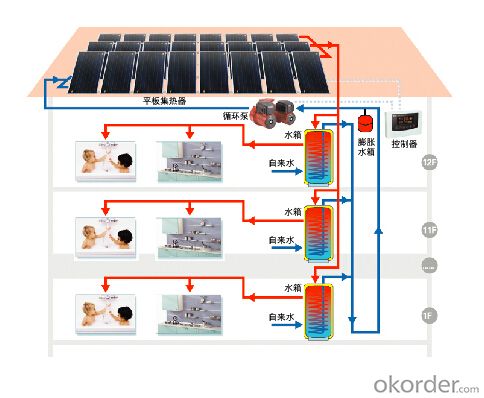
4. Flat Plate Solar Collector For Water Heater Specification

5. FAQ
(1) Q:Compared to the vacuum tube solar system, what is the advantage of flat plate solar collector system?
Re: In the condition of the same area, the flat plate solar collector system of high efficiency can provide more hot water.
(2)Q: Can you offer samples?
Re: It seems a little difficult for the moment, but if you are interested, you are welcom to have a visit in our factory.
- Q: Can solar collectors be used for generating steam?
- Yes, solar collectors can be used for generating steam.
- Q: Can solar collectors be used for heating construction sites?
- Yes, solar collectors can be used for heating construction sites. Solar thermal collectors can capture and convert sunlight into heat energy, which can then be utilized for heating purposes in construction sites. This eco-friendly and cost-effective solution can help reduce reliance on traditional heating methods and promote sustainable practices in the construction industry.
- Q: Can solar collectors be used for heating military facilities?
- Yes, solar collectors can be used for heating military facilities. Solar thermal systems can efficiently capture and convert sunlight into heat energy, which can then be utilized for heating purposes in various buildings, including military facilities. Implementing solar collectors for heating can help reduce reliance on traditional fossil fuels, lower energy costs, and contribute to a more sustainable and environmentally friendly solution for military heating needs.
- Q: Can solar collectors be used for generating electricity on farmland?
- Yes, solar collectors can be used for generating electricity on farmland. Solar collectors, also known as solar panels or photovoltaic (PV) cells, convert sunlight into electricity through the photovoltaic effect. Farmland provides ample space for installing solar panels, allowing for the efficient harnessing of solar energy. Additionally, by installing solar collectors on farmland, farmers can generate their own clean, renewable energy, reducing their dependence on traditional energy sources. This can lead to significant cost savings, as well as a more sustainable and environmentally-friendly farming operation. Furthermore, solar collectors can be installed on elevated structures, such as poles or racks, to minimize the impact on agricultural activities and ensure that the land remains usable for farming. Overall, solar collectors are a viable and beneficial option for generating electricity on farmland.
- Q: Are there any health risks associated with solar collectors?
- Yes, there are minimal health risks associated with solar collectors. The main concern is the potential for burns or overheating if individuals come into direct contact with the hot surfaces or fluids within the system. However, when properly installed and maintained, solar collectors pose no significant health risks.
- Q: Can solar collectors be used for drying toys and games?
- Solar collectors can indeed be used for drying toys and games. Solar collectors are designed to capture sunlight and convert it into heat energy. This heat energy can then be used for various purposes, including drying objects. By placing toys and games in a solar collector, the heat generated by the collector can help to speed up the drying process. This can be especially useful for items that are not suitable for traditional drying methods, such as delicate or electronic toys. However, it is important to note that the effectiveness of using solar collectors for drying toys and games may vary depending on factors such as the size of the collector, the amount of sunlight available, and the specific materials used in the toys and games.
- Q: Can solar collectors be used for heating hotels and resorts?
- Yes, solar collectors can be used for heating hotels and resorts. Solar thermal systems, such as solar water heating and solar air heating, are effective in capturing and utilizing the sun's energy to provide hot water and space heating for buildings. By installing solar collectors on the rooftops or other suitable areas, hotels and resorts can significantly reduce their reliance on traditional heating methods and lower their energy costs while promoting sustainability.
- Q: Can solar collectors be used for heating senior living communities?
- Yes, solar collectors can be used for heating senior living communities. Solar collectors, such as solar water heaters or solar air heaters, can efficiently harness the sun's energy to provide heat for various applications in senior living communities. This renewable energy source can help reduce heating costs and decrease the carbon footprint of these communities, contributing to a more sustainable and environmentally friendly living environment for seniors.
- Q: How do solar collectors perform in coastal areas with high salt content in the air?
- Solar collectors can perform well in coastal areas with high salt content in the air, but they require additional maintenance and monitoring compared to areas with lower salt content. The salt in the air can have a corrosive effect on the components of the solar collectors, especially on the metal surfaces. This can result in a decrease in their efficiency and lifespan if not properly addressed. To mitigate the impact of salt content in the air, it is important to regularly clean the solar collectors to remove the salt deposits. This can be done by rinsing them with clean water or using special cleaning solutions designed to remove salt buildup. In some cases, a protective coating can be applied to the collector surfaces to minimize the effects of salt corrosion. Additionally, it is crucial to conduct regular inspections of the solar collectors in coastal areas with high salt content. This involves checking for any signs of corrosion, damage, or decreased performance. Any issues should be addressed promptly to prevent further damage and ensure the optimal functioning of the solar collectors. In coastal areas, it is also beneficial to choose solar collectors that are specifically designed to withstand the corrosive effects of salt. These collectors often have protective coatings or use materials that are more resistant to corrosion, such as stainless steel or coated aluminum. Overall, while solar collectors can still effectively generate energy in coastal areas with high salt content, proper maintenance and monitoring are essential to ensure their long-term performance and efficiency.
- Q: Can solar collectors be used for heating radiant wall systems?
- Yes, solar collectors can be used for heating radiant wall systems. Solar collectors, such as solar thermal panels, can capture the sun's energy and convert it into heat. This heat can then be used to warm water or air, which can be circulated through radiant wall systems to provide heating. This is an environmentally friendly and energy-efficient way to heat buildings.
Send your message to us
Tenkiv Solar Collectors - Flat Plate Solar Collector for Water Heater
- Loading Port:
- Tianjin
- Payment Terms:
- TT OR LC
- Min Order Qty:
- 1 kg
- Supply Capability:
- 50 kg/month
OKorder Service Pledge
OKorder Financial Service
Similar products
Hot products
Hot Searches
Related keywords
